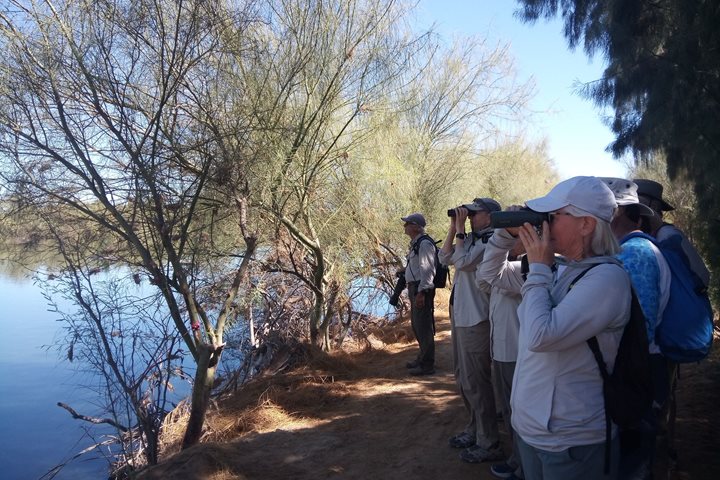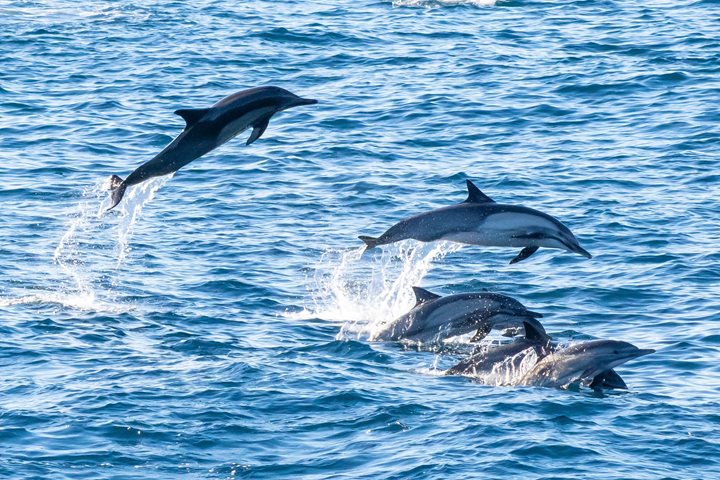We started the last full day of our expedition very early and for a good reason. The colorful, reddish sandstone formations at Punta Colorada on the eastern side of San José Island are particularly gorgeous at sunrise, and many of us went ashore long before the sun rose. Eager photographers and nature lovers boarded Zodiacs to find the perfect spot to photograph the formations, and they were rewarded with spectacular vistas of the multicolored geology and a pristine, cloudless sky of fire. Tripods helped to achieve the desired depth of fields to capture the three- to five-million-year-old fossils of ancient sea turtles or snails. Other guests looked for birds, trying to identify those that were just beginning to get active. Many, many gigabytes later, everyone came back on board for a well-deserved breakfast and to download all those wonderful images to make room on memory cards for another round. After breakfast, we went back to the island to explore it more thoroughly by hiking a beautiful arroyo. We enjoyed the intrinsic beauty of a desert environment and admired, among various plant species, the now familiar cardón and galloping cacti, Adam’s tree, and agave. Punta Colorada is exposed to the northwest winds that prevail in the Sea of Cortez during the winter and spring. It is a place that we don’t get to visit very often, but today the weather was perfect. Conditions were ideal to enjoy this amazing place.
After we all came back on board, National Geographic Venture headed offshore towards deeper waters. The glassy waters were an irresistible invitation to search for marine life, and we were not disappointed. Just about the time that lunch was announced, a sperm whale was spotted, the first one of the entire Baja season! The unmistakable blow, tilted to the left and forward, was clearly seen far away near the horizon. The king of divers, capable of diving to abyssal depths more than nine thousand feet and possibly more, showed his flukes in the air before we were able to get close. We patiently awaited his return to the surface. A bit more than an hour later, the characteristic blow was spotted again! Everyone on deck – guests, staff, and crew – eagerly hoped for a closer look before those huge flukes in the air disappeared once again. Another hour later, the owner of the largest brain on our planet came back to the surface and allowed us to get an excellent and close view of his large, square-looking head, his wrinkled skin, and his thick caudal peduncle. Everyone admired the magnificent creature right next to our ship. When those flukes disappeared under the surface once again, we couldn’t think of a better way to end our remarkable journey exploring the beautiful peninsula of Baja California and the Sea of Cortez!
Photo caption and photographer: Male sperm whale showing his flukes at the start of a deep dive. Photo by Carlos Navarro







